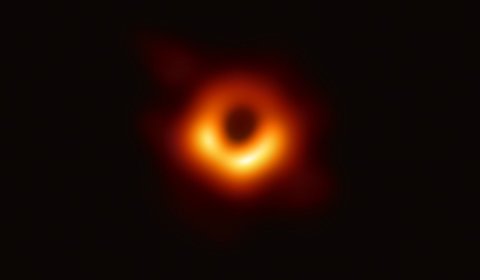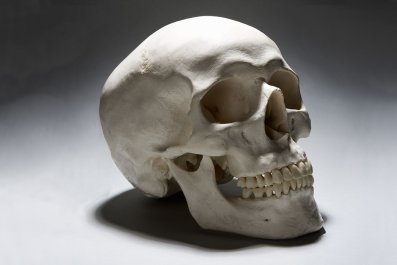As viral images go, scientists couldn't have asked for a better one-two combo. On April 10, the first-ever image of a black hole and its burning ring of gas was seen around the world. Next came a different kind of caught-in-the-moment radiance—the overjoyed reaction of Katherine Bouman, whose algorithm played a role in the black hole's capture.

It was a good day for science, as well as for women in STEM (science, technology, engineering and math).
It was also, unfortunately, a rare day, with the black hole representing a troubling metaphor. That term might describe the experience of many girls who, despite their love of STEM, don't receive the same encouragement that boys do. Often called the "leaky pipeline," this problem grows during the high school years, when interest in STEM drops from 15.7 percent among freshmen girls to 12.7 percent among seniors and only gets worse in college. More than 6.7 million men in the U.S. have a degree in STEM subjects compared with 2.5 million women. By graduate school, men and women might as well be operating in separate galaxies.
The result is a world in which women constitute just 25 percent of the STEM industry, according to federal data. Female STEM professionals are less visible and paid less than their male counterparts.
One solution to the problem, both now and for the next generation, is to provide girls with STEM role models. In other words, we need more viral images like Katie Bouman's—and of Feryal Özel, Sara Issaoun, Sandra Bustamante and the dozens of other women who worked on the project. For girls, seeing someone who looks like them, as well as understanding how that woman got to where she is, buoys them with courage to chase their dreams.
It's a proven approach. According to a 2018 Microsoft survey, for example, STEM role models increase girls' interest in STEM careers from 32 percent to 52 percent.
That concept spills into pop culture, confirmed by a 2018 study by the Geena Davis Institute on Gender in Media, which found that nearly two-thirds of women working in STEM cite X-Files protagonist Dana Scully as a personal role model who increased their confidence to excel in a male-dominated profession. (A separate 2018 Geena Davis Institute study, which surveyed the previous 10 years of popular films and TV shows, found that male STEM characters outnumber female STEM characters nearly two to one—the ratio hasn't changed in 10 years.)

There are already thousands of female STEM professionals doing groundbreaking work, but how do we make them role models? By establishing programs that think out of the box. Earlier this year, we launched an initiative that aims to empower female STEM role models from a diverse array of fields. The initiative is called If/Then— If we support a woman in STEM, then she can change the world.
Over the next few months, the American Association for the Advancement of Science will lead a selection process, wherein 100 female STEM professionals, representing both conventional and unique careers, will be named AAAS If/Then Ambassadors. For two years, they'll be coached on how to engage with middle-school girls on a national platform, develop their own press kits, engage in photo and video shoots and receive tutorials from communications experts. From there, they'll fan out to share their inspirational backstories in person and on platforms consumed by girls, including popular YouTube channels and Saturday morning television shows.
Without female STEM role models, we risk acquiescing to a world where even brilliant minds like Bouman are dragged into discriminatory devolutions. Not even 24 hours after her moment of elation, an army of Reddit and Twitter users took to their keyboards to indicate, falsely, that an astrophysicist named Andrew Chael had written 850,000 lines of code that led to the discovery, and that Bouman was taking credit for it.
In truth, Bouman and Chael, who are friends, are part of a team of more than 200 researchers whose collective efforts led to the seminal breakthrough.
It may take a while—maybe even a generation—but with more female role models and a little creativity, we can get past this tired way of thinking. The black hole that Bouman and her colleagues captured might be dark and vast, but the bright-orange ring of electro-radiation offers a different kind of metaphor—a scrappy ember, burning beyond the abyss. When we create opportunities for girls to stretch their minds beyond the gravitational pull of outdated gender mores, we give them the confidence to change the world.










